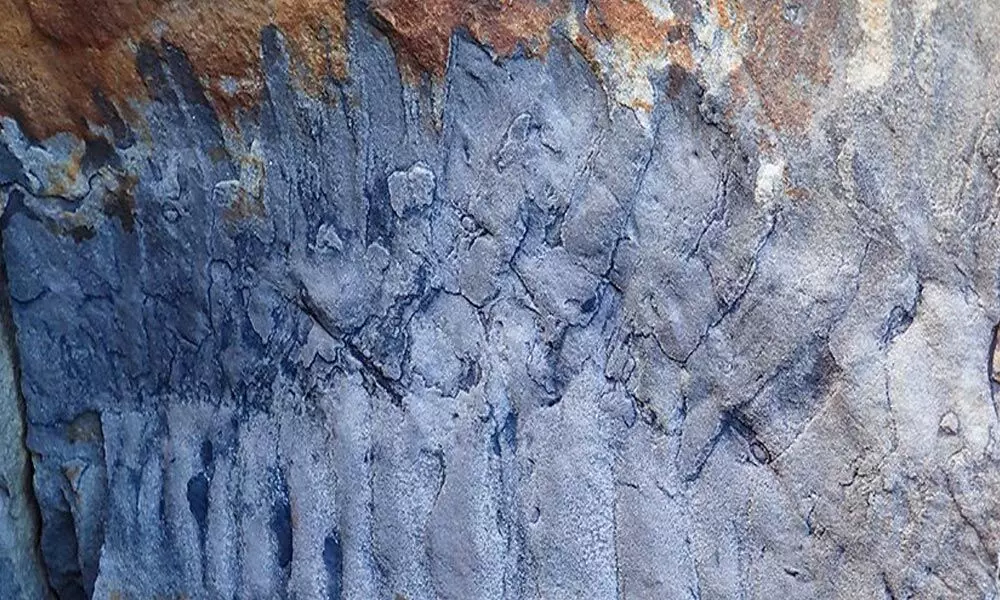Scientists Discovered 326 million-Year-Old Fossil Remainings Of The World's Largest Millipede

Scientists Discovered 326 million-Year-Old Fossil Remainings Of The World's Largest Millipede
- Scientists have uncovered a 326 million-year-old fossil that contains remnants of the world's largest millipede.
- The fossils come from the now-extinct Arthropleura genus of arthropod millipedes, and they make this species the world's largest known invertebrate.
Along this stretch of northeast England's coast, scientists have uncovered a 326 million-year-old fossil that contains remnants of the world's largest millipede. It was believed to be 2.7 metres (almost 9 feet) long, which is comparable to the length of a car.
The fossils come from the now-extinct Arthropleura genus of arthropod millipedes, and they make this species the world's largest known invertebrate. However, the discovery, which occurred in 2018, was purely by chance.
Earth scientist Neil Davies of the University of Cambridge in the United Kingdom says, it was a pure fluke of a discovery. Because of the manner the boulder had fallen, it had cracked open, exposing the fossil, which one of our former PhD students chance to see while passing by. It was an incredible find, but the fossil is so enormous that we had to bring it up the rock wall in four pieces.
Though the real millipede would have been much larger, the found chunk of fossil measured 75 centimetres (almost 30 inches). It could have weighed around 50 kg, according to the team (110 pounds).
The fossil is not only a world record breaker, but it is also teaching specialists more about ancient millipedes. The UK would have been near to the equator during the Carboniferous Period, mirroring previous Arthropleura discoveries. The type of setting, however, is distinct: an open forest environment along the coast.
The only two other Arthropleura fossils identified to date were smaller in size and were unearthed in Germany. These earlier studies also revealed that the invertebrates preferred to live near coal swamps, which were large expanses of biomass that accumulated as peat as it died, eventually turning into coal.
It's widely assumed that arthropods (insects and millipedes) can't physically grow to this size today because oxygen levels aren't high enough to support their technique of breathing at greater sizes.
However, this fossil comes from before the late Carboniferous and Permian periods, when atmospheric oxygen levels were only 23%, not much higher than today's 21%. This suggests that increased oxygen levels aren't the only thing allowing arthropods to grow to such enormous sizes.
The size of Arthropleura is attributed to a high-nutrient diet and a dearth of predators, according to the researchers.
Davies explained that while they can't be certain what they ate, there were lots of nutritious nuts and seeds in the leaf litter at the time, and they could have been predators feeding on other invertebrates and even tiny vertebrates like amphibians.
Arthropleura creatures thrived for about 45 million years near the equator before becoming extinct during the Permian period (299-252 million years ago). The cause of their extinction is unknown it could have been attributed in part to the rise of reptiles who eventually outcompeted them but we're delighted they're no longer crawling around.
The fossil was discovered in sandstone that had fallen off a cliff, and it had been in a river channel at one time. It most likely represents a moulted portion of Arthropleura exoskeleton that was subsequently filled with sand and preserved.
This level of preservation is extremely rare as seen by the scarcity of large Arthropleura fossils and each new discovery can teach us a lot more about how these ancient creatures lived and evolved.
Davies explained that finding these giant millipede fossils is rare because their bodies tend to disarticulate once they die, . It's likely that the fossil is a moulted carapace that the animal shed as it grew. Because they haven't uncovered a fossilised skull yet, it's tough to know everything there is to know about them.















